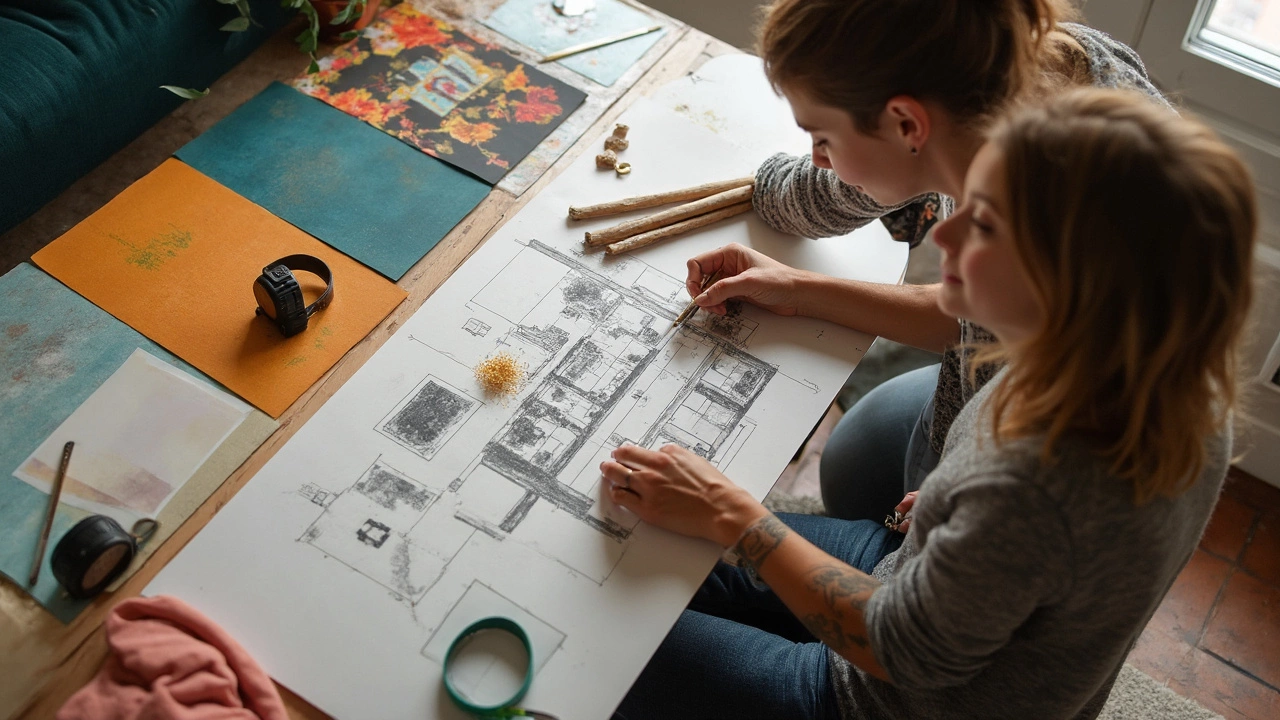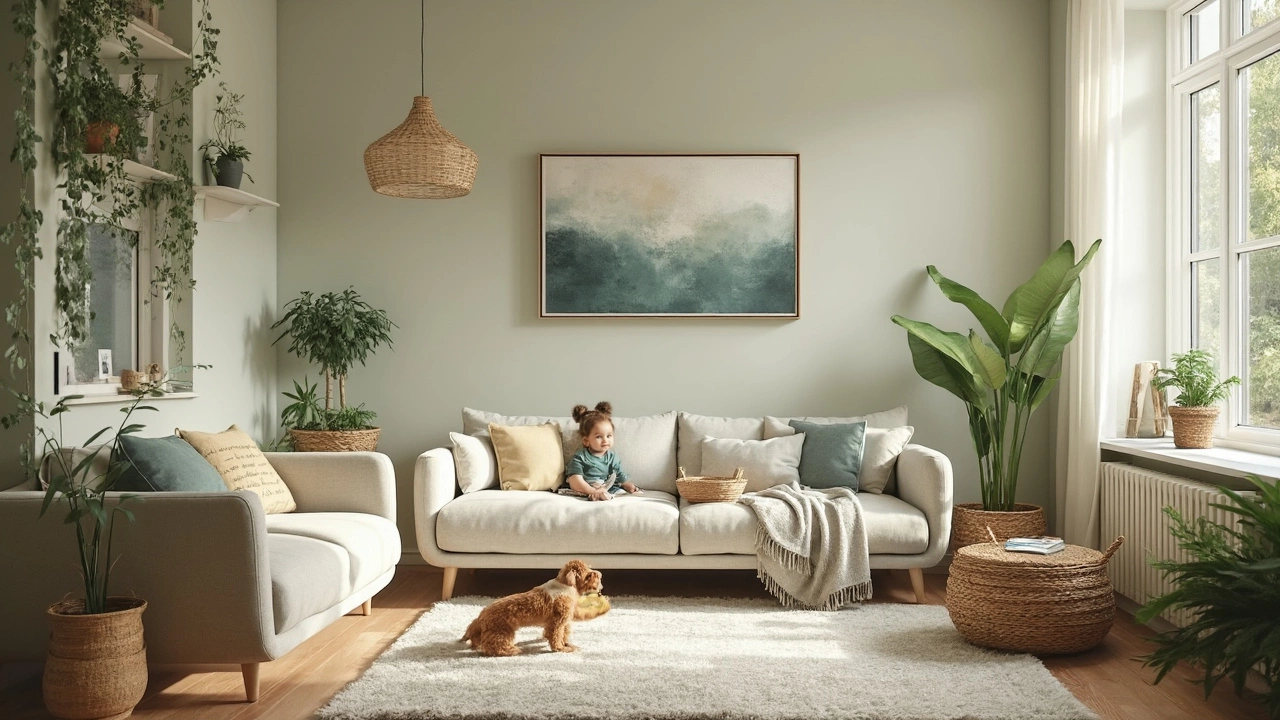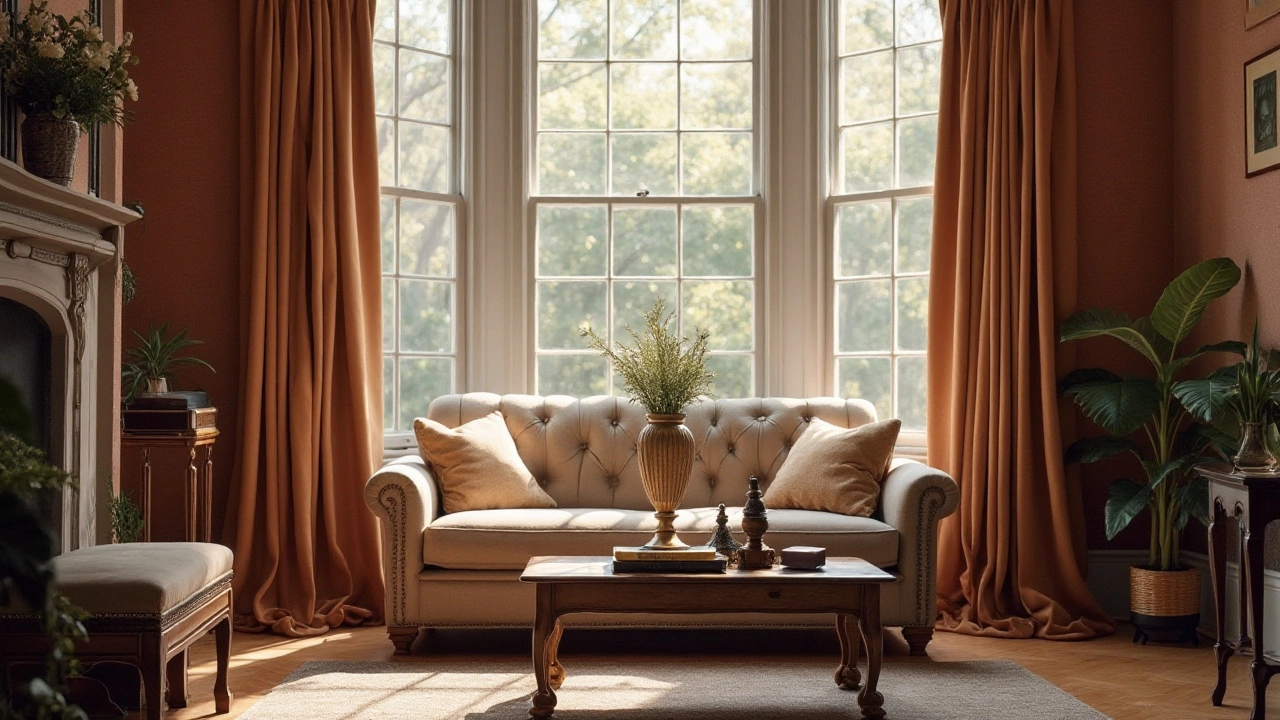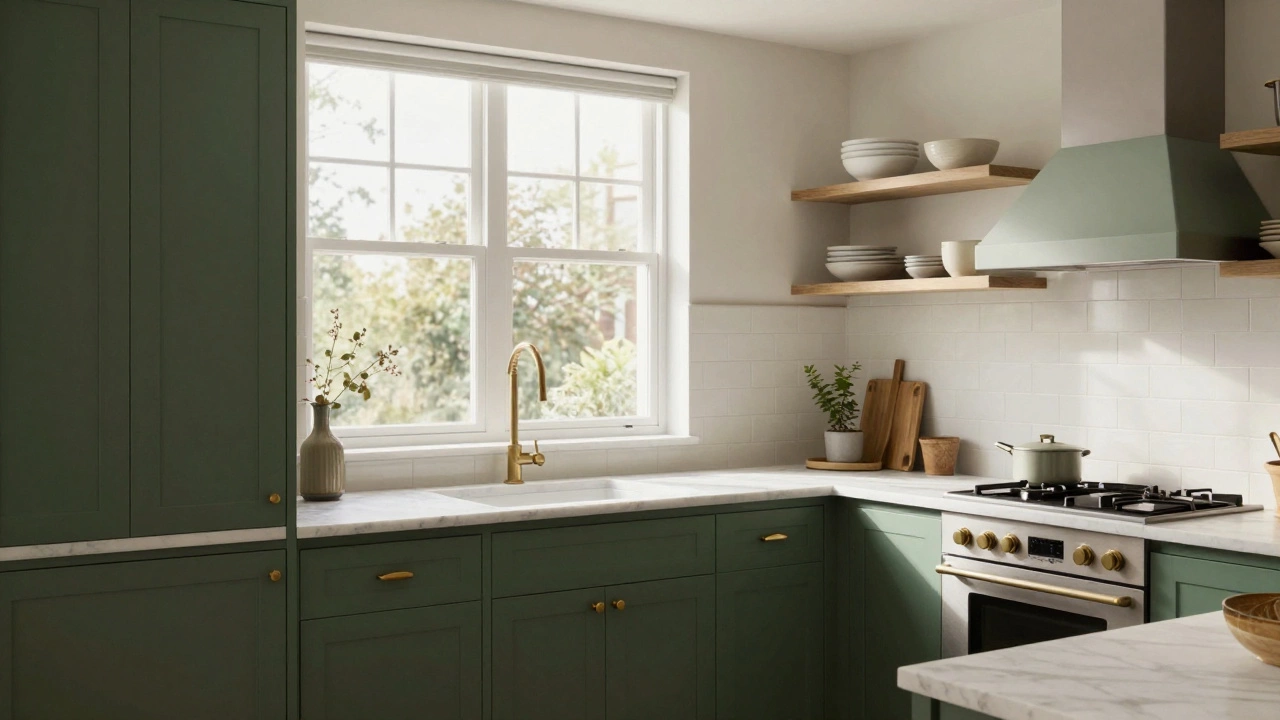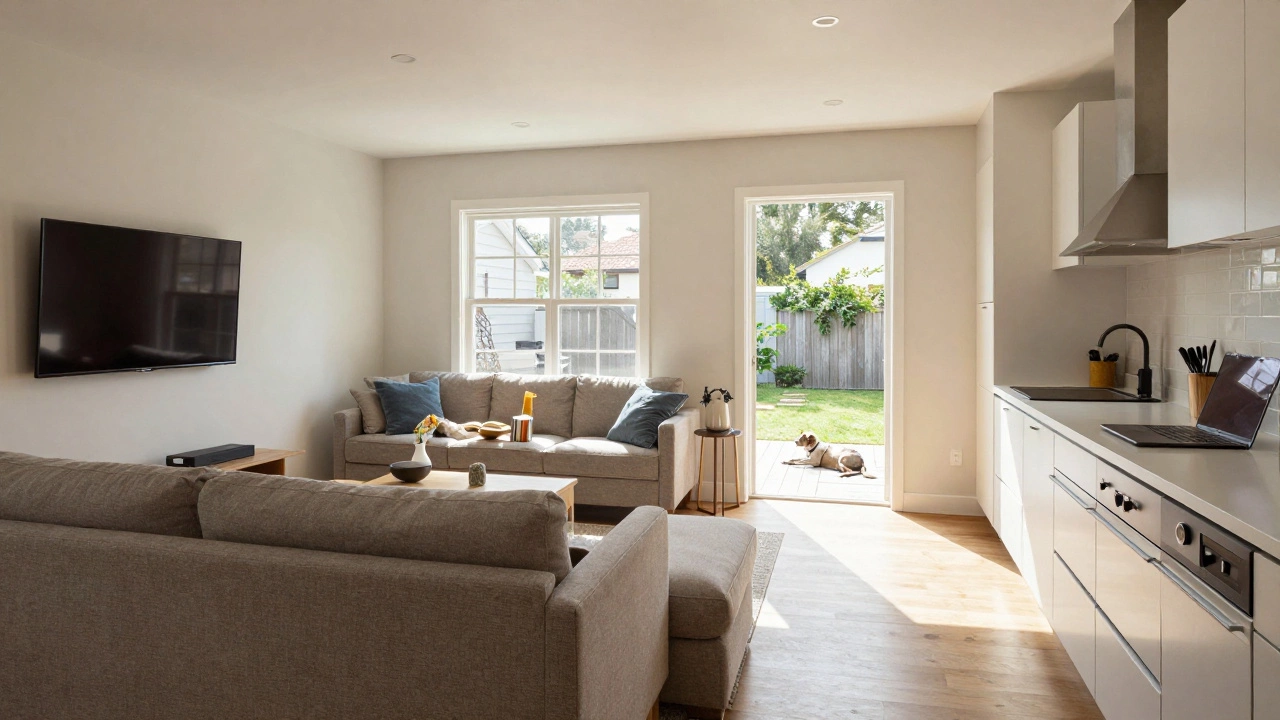Think you can skip math if you're into interior design? Straight talk: you can't. But before you panic, it's not about solving crazy equations or remembering everything from high school algebra. The kind of math you actually need is practical, and yes—most folks handle it just fine with a little attention.
Picture this: you're figuring out if a couch will fit through a doorway, or trying to space out shelves so they're not awkwardly crammed. That's all math. It's measuring, adding up numbers, and making sure things are balanced—not just in style, but in size. You're not only choosing pretty colors, but also making sure things literally fit together.
- Math in the Design Process
- Measuring Spaces: Why Accuracy Matters
- Budgeting and Shopping Smart
- Simple Math Tricks Every Designer Uses
- How to Get More Confident With Numbers
Math in the Design Process
Math is everywhere in interior design. From the first sketch to the last piece of furniture, numbers tell you what will work and what will fail. Let’s break it down. When drawing up a floor plan, you have to know the exact size of the room. This isn't just a ballpark guess. If you’re off by just a couple of inches, you could end up ordering a rug that sticks out into the hallway or a dining table no one can squeeze around.
Scale is a big deal. It helps you take a tiny drawing and make sure everything translates into real life. Designers often use a scale ruler or specific software to turn real room measurements into something easy to draw and understand. Without math, your sketch would just be a bunch of shapes that might not fit at all in the actual space.
Another place math sneaks in? Arranging objects. The ‘rule of thirds’ for wall art, spacing between lights, the perfect distance between a sofa and a coffee table—all of this is about measurements and balance. Designers might leave exactly 18 inches between the coffee table and the edge of the sofa for comfort. Even hanging curtains isn’t guesswork; you’ll want them at the right height and width for the window, using some quick calculations to avoid a too-short, awkward look.
- Measurements are just as important as colors and styles. If you mess up sizing, the end result feels crowded or empty.
- You use math to figure out how much paint or flooring to buy, so you don’t overspend or run out mid-way through a job.
- Every inch counts when you’re planning built-in furniture or modular cabinets.
Check out this simple breakdown of common measurements in interior design:
| Design Element | Typical Measurement |
|---|---|
| Coffee table from sofa | 16-18 inches |
| Walking space between furniture | 30-36 inches |
| Dining table space per person | 24 inches |
| Height to hang art | 57-60 inches from floor |
So, if you’re considering a career—or even a hobby—in interior design, don’t worry about calculus. Just get comfortable with a tape measure, an online calculator, and a clear sense of space. That’s the real ‘math’ involved.
Measuring Spaces: Why Accuracy Matters
It's shocking how quickly a floor plan can fall apart when the measuring tape lies. Not rounding up or down by just half an inch can mean the difference between a perfect fit and a jammed sofa. In fact, according to the National Kitchen + Bath Association, redoing mistakes from mis-measurements costs US homeowners thousands every year. It's not just annoying—it hits your wallet.
Getting the right measurements is what lets you map out exactly where everything belongs. You can't just eyeball it. Your new rug, TV stand, or window shades might look good online, but your room has the final say. Take real, honest measurements—room length, width, and ceiling height—before buying anything. Want to avoid having to send stuff back? Measure twice, shop once.
“Design starts with three things: a tape measure, a pencil, and patience. The rest is style.” – James Huniford, New York-based interior designer
Here are the basics every interior design fan needs to check for each space:
- Wall-to-wall distance (so furniture doesn't crowd or float)
- Doorways and hallways (to check if pieces fit through easily)
- Ceiling height (super important for tall shelves or pendant lights)
- Window and outlet positions (because you don't want to block sunlight or plug access)
If you want extra peace of mind, sketch a quick floor plan with all your numbers. There are even free apps that help with this—just plug in the numbers, and see your space before you commit.
Here's how measurement mistakes can stack up fast:
| What Was Missed | The Headache |
|---|---|
| Didn’t check door width | Sofa gets stuck outside |
| Ignored ceiling height | Bookcase blocks a vent |
| Forgot about outlets | Lamp ends up with no plug |
If you're into interior design, a little careful math saves hours of hassle. Take the extra few minutes. Your future self (and your back) will thank you.
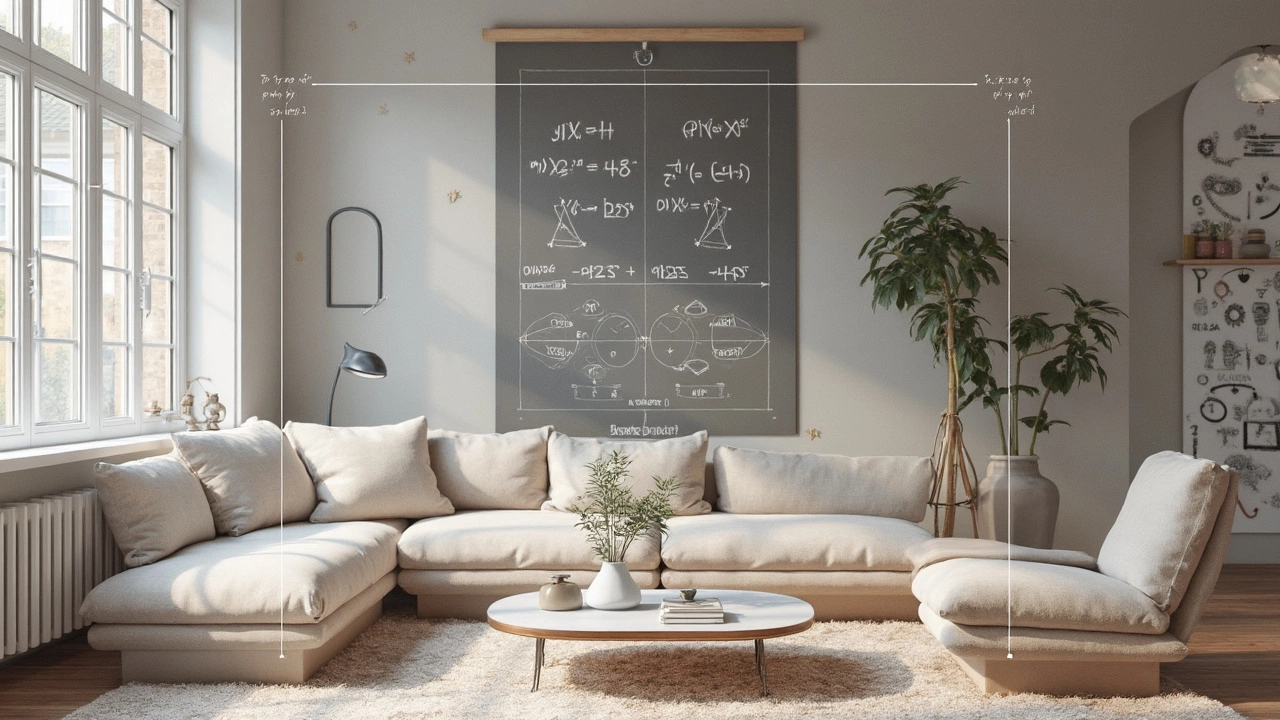
Budgeting and Shopping Smart
Here’s the real deal: Even in interior design, math pops up every time you pull out your wallet. Before you pick the fanciest rug in the shop, you need to know what you can actually afford and how much everything will cost together. Missing this step leads to blown budgets and rooms that feel kinda half-done.
The way pros handle budgeting is straightforward. First, set your spending limit. Break it down for each item or project part—like furniture, paint, lighting, and little details. A lot of designers crunch these numbers using a simple spreadsheet. For example, if you’re working with $7,000, you might divide things up as:
| Item | Budget ($) |
|---|---|
| Sofa | 1,500 |
| Paint | 400 |
| Rug | 600 |
| Lighting | 500 |
| Accessories | 700 |
| Chairs | 800 |
| Side Tables | 500 |
| Art & Decor | 1,000 |
Notice how the numbers need to add up. It’s easy to get excited and overspend on one thing—then realize you’re out of cash for the rest. That’s why people triple-check their math as they go.
Shopping smart means you compare prices and look for deals. You tally up all the little extras—tax, shipping, even tools like nails and tape. Those add up fast. Let’s say you find a chair for $320 online, but shipping is $85. If you didn’t add that, you're under-budgeting. Always write down the full amounts so you know exactly what you're spending.
Here are some tips that experienced designers live by when budgeting and shopping:
- Leave 10-15% of your total budget for surprises and last-minute finds.
- Track your spending as you go to avoid any nasty shocks at checkout.
- Don’t forget about delivery costs, assembly fees, or sales tax.
- Don’t get sucked in by flashy sales—if it blows your budget, walk away.
Good budget math means less stress and a better-looking room. When your numbers add up, your shopping can stay fun instead of frantic.
Simple Math Tricks Every Designer Uses
If you ask any pro in interior design, there are a few quick math hacks they don’t skip. The numbers aren’t complicated—most of the time, they're little tricks that save you from big mistakes or awkward spaces. You don't have to love math, but these little moves can save your project.
- The 60-30-10 Color Rule: This is about balance. Use about 60% of a main color, 30% a secondary, and 10% a pop color. It keeps rooms from feeling messy or bland.
- Measuring Furniture Fit: Grab the tape. Add up furniture and wall dimensions. Most folks use a 36-inch minimum space for walkways, so you aren’t squeezing by. That’s a math move you’ll use constantly.
- Area Rugs: Want your floor plans to look pro? Make sure your rug is big enough so at least two legs of your furniture sit on it. Usually, that means measuring and going one size up from what feels "safe." About 8x10 or 9x12 feet for living rooms is typical.
- Scaling Art: Art above a couch should be about two-thirds the width of the furniture. If your sofa’s 90 inches, grab art that’s around 60 inches wide—no tiny frames lost in a sea of blank wall.
- Perfect Curtain Length: Hang curtains high and wide. A classic trick is to install rods 4-6 inches above the window frame and extend rods 8-12 inches past the window on each side. It gives the illusion of bigger windows and rooms. That’s math at work, not just luck.
Here’s something handy—a look at common living room furniture spacing. People mess this up all the time:
| Item | Recommended Spacing |
|---|---|
| Couch to Coffee Table | 16-18 inches |
| TV to Seating | 1.5-2.5 times TV diagonal |
| Pathways | 36 inches minimum |
Don’t forget the tape measure and a notebook—sometimes a quick sketch with measurements will save hours of headaches. Interior design isn’t about flexing your math muscle. It’s about avoiding rookie slip-ups with a few simple numbers and rules that make every room work better. After a bit, these tricks become second nature.
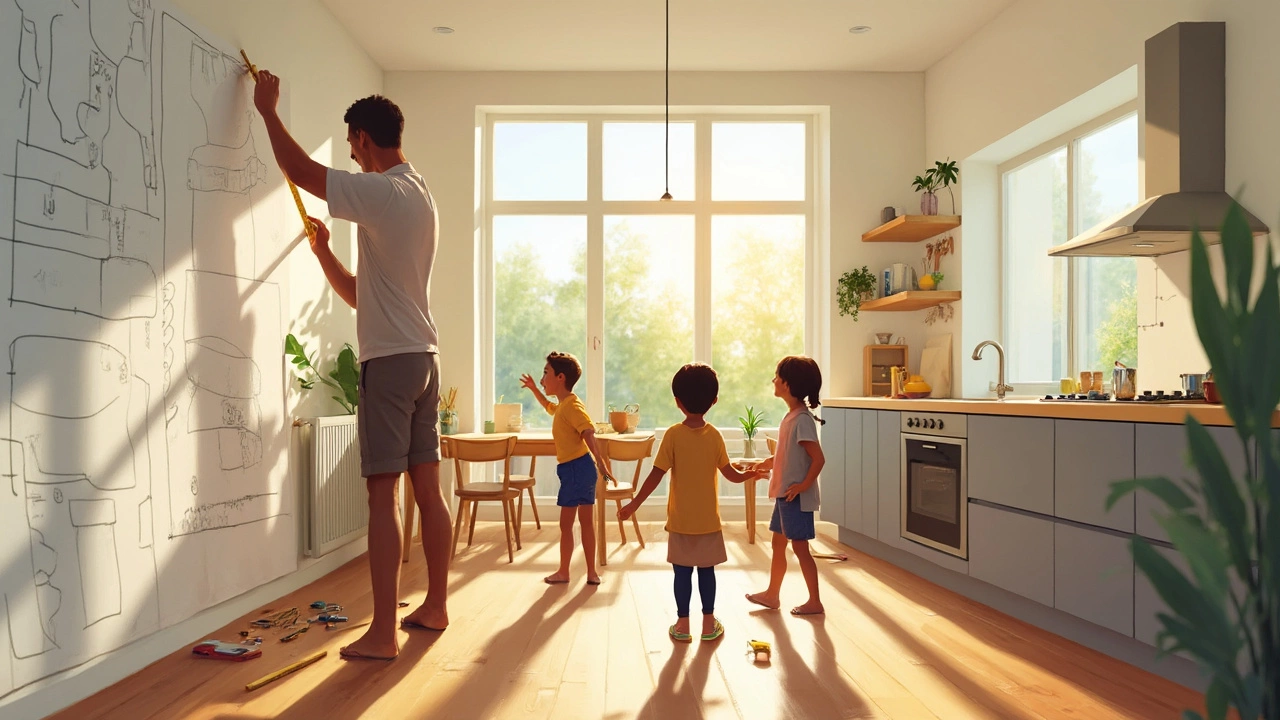
How to Get More Confident With Numbers
If the idea of math in interior design makes you nervous, you’re not alone. Loads of people worry they’ll mess up a measurement or buy the wrong thing. But a few simple tweaks and tricks can make math feel less scary—sometimes even fun.
First off, never skip the measuring tape. Accurate numbers are everything. Take two measurements, not one, and always write them down right away in a clear spot. Measurements should be in the same unit, so stick to inches or centimeters—don’t flip-flop between them.
- Use your phone’s calculator for quick math. Most designers rely on it, not on mental math or memory.
- Online tools and apps can help you figure out room area, furniture layout, and budgets. For example, RoomSketcher and MagicPlan are user-friendly and free.
- If you’re planning a space, draw a simple floor plan. Grid paper or a basic digital tool makes it easier to visualize and keep numbers neat.
- Try rounding up when buying materials like paint or tiles. If your wall measures 59 square feet, buy for 65. A little extra saves stress if you make a mistake.
Check out this quick cheat sheet—these numbers come up in almost every project:
| Item | Standard Measurement |
|---|---|
| Sofa width | 72-90 inches |
| Doorway width | Usually 32-36 inches |
| Dining chair space from wall | 36 inches |
| Walkway needed | 30-36 inches |
Another great tip: ask questions. If you’re working with builders or store staff, double-check your math with them. It’s not a sign of weakness. Even the pros do it because nobody wants to buy a table that won’t fit in the elevator.
Here’s the truth—if you practice with real-life projects (redo a closet, rearrange your living room), you’ll pick up number skills without even thinking about it. Interior design doesn’t need fancy math, just a careful, hands-on approach and a willingness to double-check yourself as you go.

